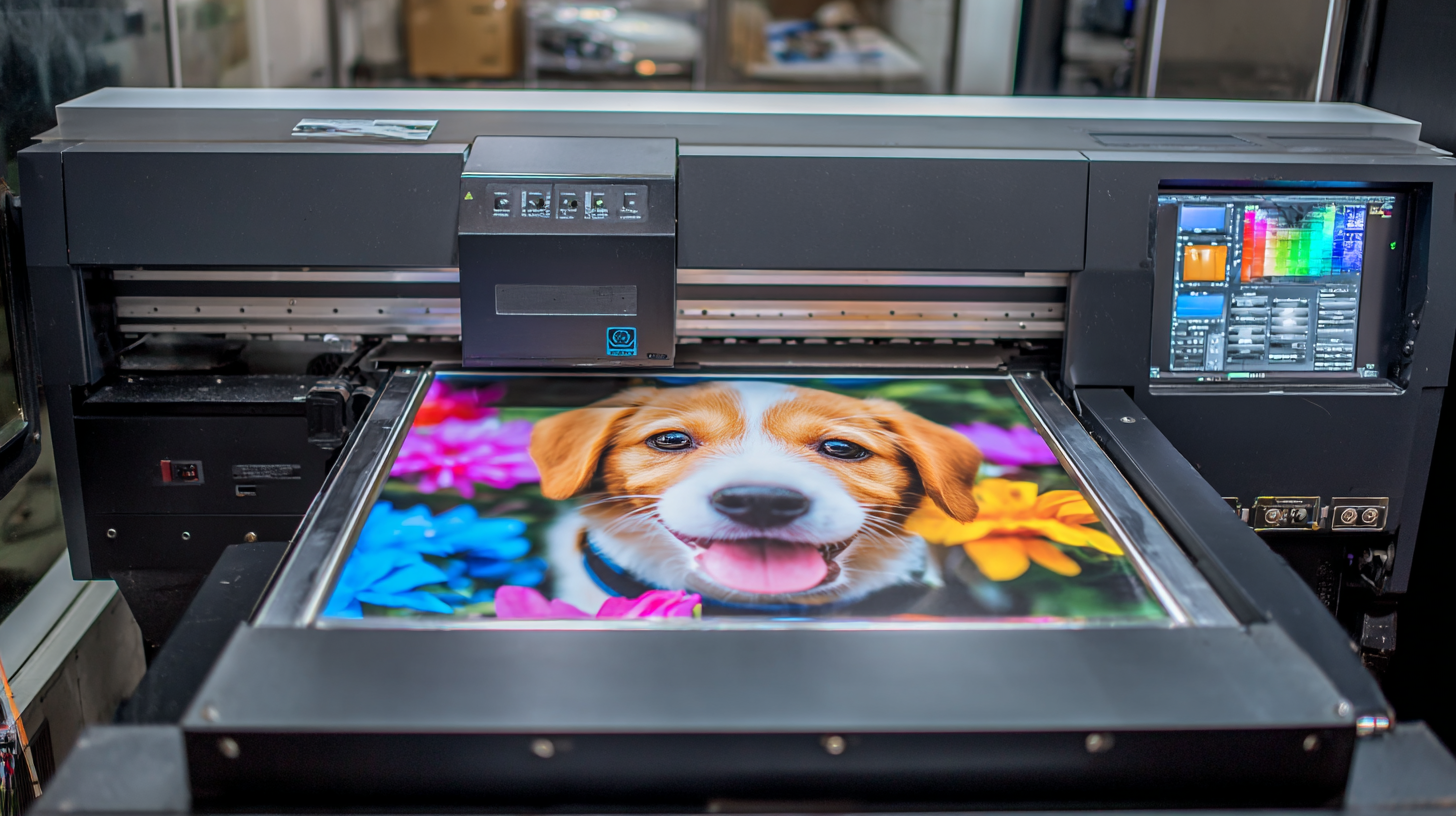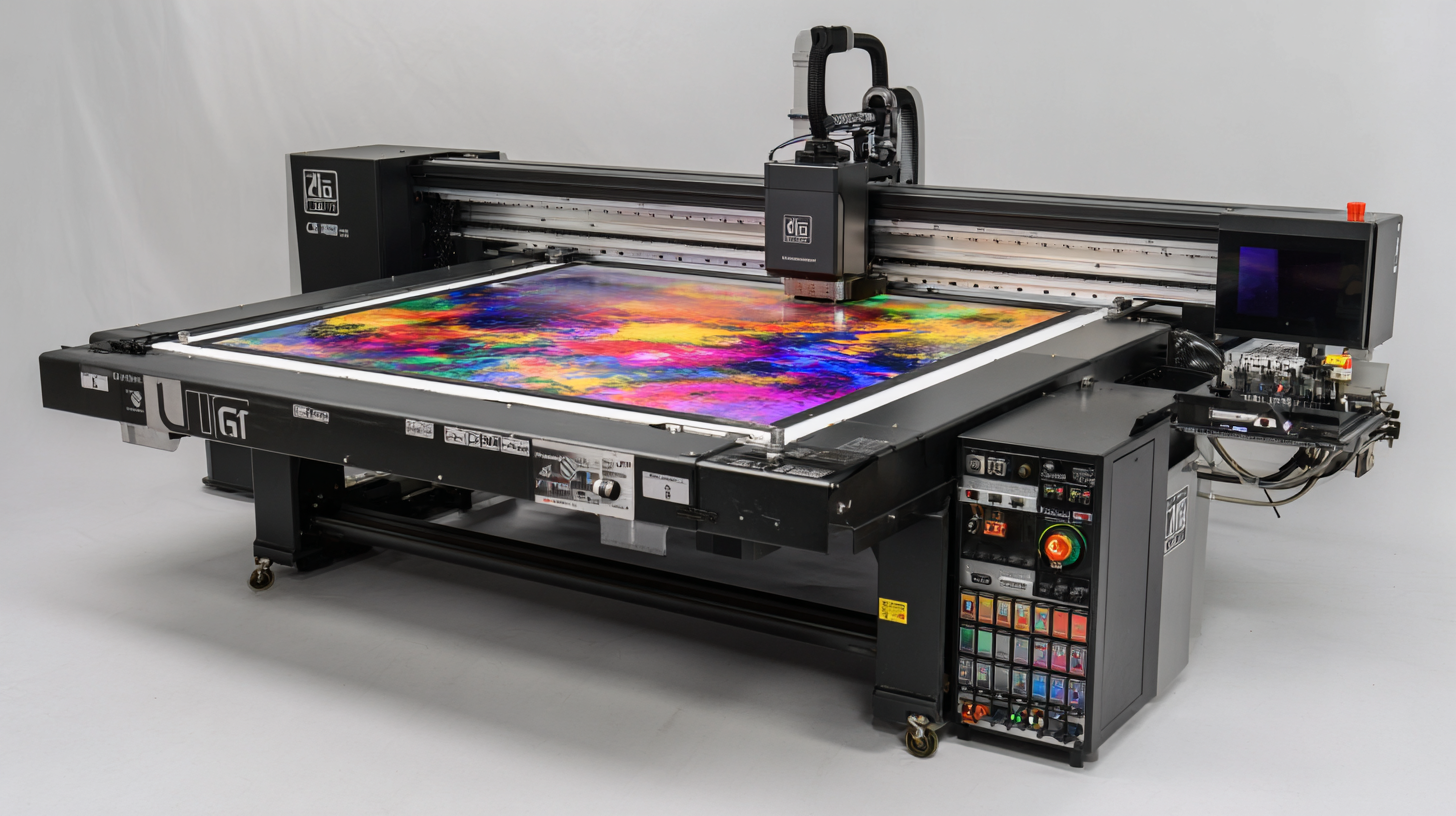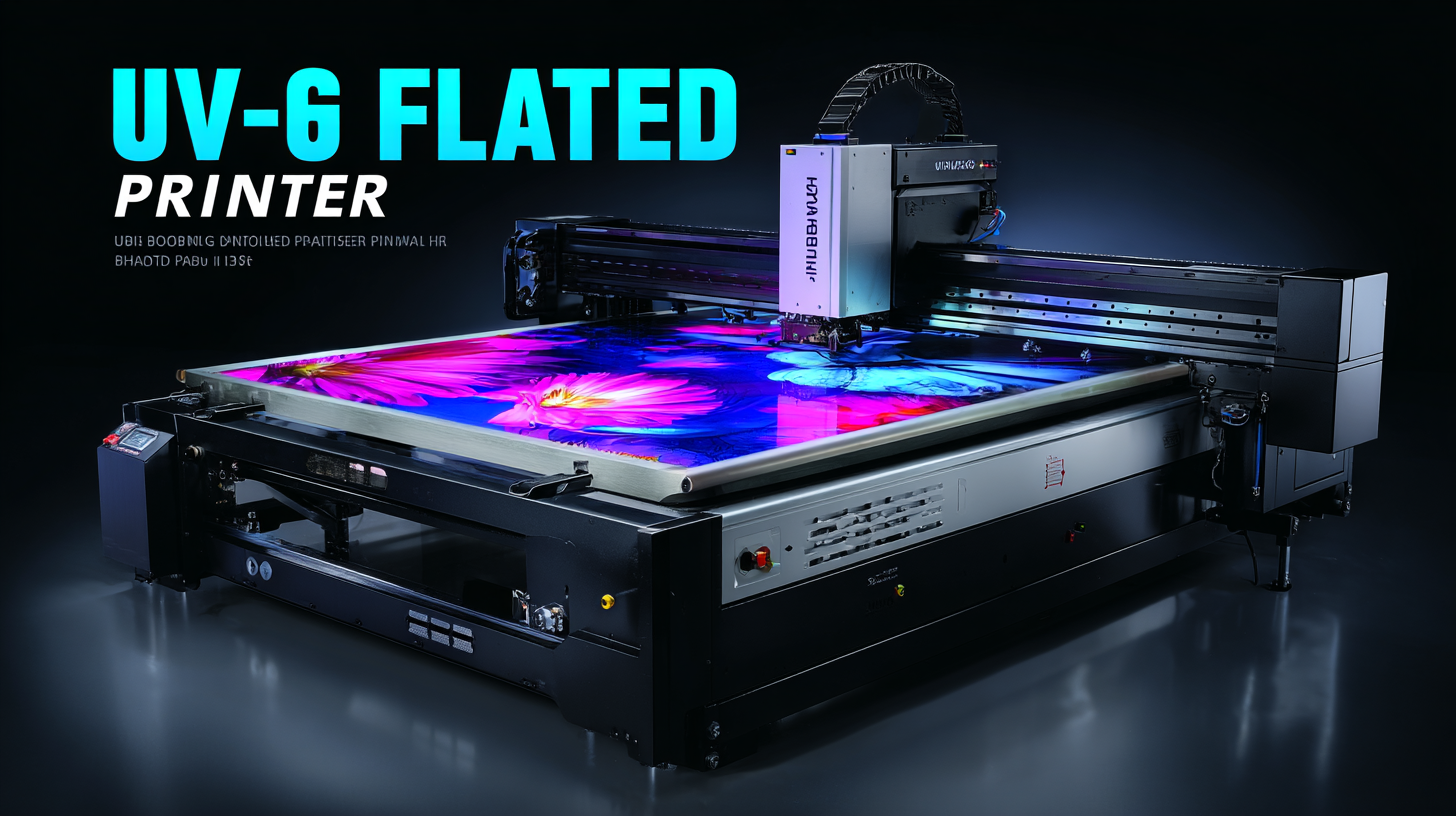Inquiry
Form loading...
In today's rapidly evolving printing industry, the demand for high-quality and versatile print solutions has never been greater. According to recent market research, the global UV flatbed printer market is projected to reach $1.91 billion by 2025, driven by the growing need for customized printing solutions across various sectors, including signage, packaging, and décor. A UV flatbed printer stands out for its ability to print on a wide range of substrates while delivering vibrant, durable results. Businesses looking to stay competitive must carefully evaluate their options, considering factors such as print speed, material compatibility, and operational efficiency. This guide aims to provide essential insights and criteria for choosing the best UV flatbed printer to meet your specific business needs, ensuring that you not only achieve superior print quality but also maximize your return on investment.

When it comes to printing on a wide variety of materials, UV flatbed printers stand out for their versatility and efficiency. One of the primary benefits of UV flatbed printers is their ability to print on both rigid and flexible substrates, including wood, metal, glass, and plastic. This capability allows businesses to expand their product offerings and cater to diverse customer needs, making it an ideal choice for custom signage, promotional products, and even furniture.
Moreover, UV printing technology provides exceptional durability and vibrant color reproduction. The UV curing process ensures that inks dry instantly upon exposure to UV light, resulting in high-resolution outputs that resist fading, scratching, and environmental damage. This makes UV flatbed printers particularly advantageous for outdoor applications, where exposure to harsh weather conditions can compromise the quality of traditional prints. Additionally, the ability to print white ink and achieve multi-layer effects enhances the creative possibilities for businesses, enabling them to produce eye-catching designs that stand out in a competitive market.
When considering a UV flatbed printer for your business, cost efficiency is a paramount factor that can significantly impact overall production expenses. UV flatbed printers are known for their ability to print directly onto a variety of materials without needing additional setup costs for different substrates. This versatility not only saves time but also reduces the need for multiple printers, ultimately leading to lower operational costs.

Tip 1: Choose a printer that allows for multi-material printing. By selecting a model that can handle various surfaces like wood, glass, or metal, you can minimize investments in multiple machines and streamline your production process.
Moreover, UV technology offers faster drying times, enabling quicker turnaround on projects. This efficiency can lead to increased throughput, allowing businesses to take on more orders and boost profitability. Additionally, the durability of UV-cured inks reduces the need for frequent reprints, further cutting down long-term costs.
Tip 2: Regular maintenance of your equipment can prevent breakdowns and prolong the life of your printer. Establish a routine maintenance schedule to ensure your UV flatbed printer operates at optimal efficiency, reducing unexpected repair costs.
When it comes to choosing the right UV flatbed printer for your business, the long-lasting benefits of UV cured prints should be a top consideration. UV printing technology offers superior durability, ensuring that prints can withstand the test of time in both indoor and outdoor environments. The UV curing process creates a hard, scratch-resistant finish that is not only visually appealing but also adds to the longevity of the printed materials. This is particularly essential for businesses that rely on high-quality prints for branding and marketing purposes.
Moreover, investing in a UV flatbed printer can lead to significant cost savings over time. Traditional printing methods may require frequent reprints due to fading or damage, but UV cured prints maintain their vibrancy and structural integrity much longer. This means fewer resources are needed for replacements, ultimately enhancing sustainability by reducing waste. As companies become increasingly mindful of their environmental impact, opting for UV technology represents a forward-thinking approach that aligns with sustainable practices in the printing industry.
One of the most significant advantages of UV printing technology is its reduced environmental impact compared to traditional printing methods. According to the NAPIM (National Association of Printing Ink Manufacturers), UV printing generates up to 90% fewer volatile organic compounds (VOCs), which are harmful pollutants that can contribute to air quality issues. This substantial reduction not only benefits the environment but also ensures compliance with increasingly stringent regulations worldwide.

Furthermore, UV flatbed printers are known for their energy efficiency. A report by the Print Industries of America highlights that UV curing systems consume up to 40% less energy than conventional drying methods. This efficiency not only translates into lower operational costs for businesses but also supports sustainability by minimizing energy consumption. Additionally, the ability to print on a wide array of substrates, including recycled materials, allows companies to promote eco-friendly practices, further enhancing their commitment to sustainability in a competitive market.
When it comes to selecting the best UV flatbed printer for your business, one of the key factors to consider is the improved print quality that these machines offer. UV flatbed printers utilize ultraviolet light to cure ink as it is printed, resulting in vibrant colors and sharp details that can elevate your products. This technology ensures that every print is not only striking but also adheres well to a variety of surfaces, including wood, metal, and glass. The high-resolution output allows businesses to produce intricate designs and fine text, making them ideal for signage, personalized gifts, and industrial applications where precision is paramount.
Moreover, the versatility in print capabilities provided by UV flatbed printers means that you can cater to a broader range of clients and industries. The ability to print on both rigid and flexible materials, combined with the rich color gamut and smooth gradients, allows for creative freedom and the production of high-quality visuals that attract customers. As businesses increasingly seek to stand out in a crowded marketplace, investing in a UV flatbed printer can be a game-changer, ensuring that your print quality meets the highest standards while also fulfilling various client requests.
| Feature | Description | Importance Level |
|---|---|---|
| Print Resolution | Typically ranges from 720 to 1440 dpi, ensuring high detail in prints. | High |
| Print Size | Supports a variety of sizes, with options for oversized formats. | Medium |
| Material Compatibility | Can print on rigid and flexible materials, including wood, glass, and metal. | High |
| Color Gamut | Wide color range allowing for vibrant and accurate color reproduction. | High |
| Speed | Variable speeds based on complexity; faster models available. | Medium |
| Maintenance | Regular maintenance is required to keep print quality high. | High |
